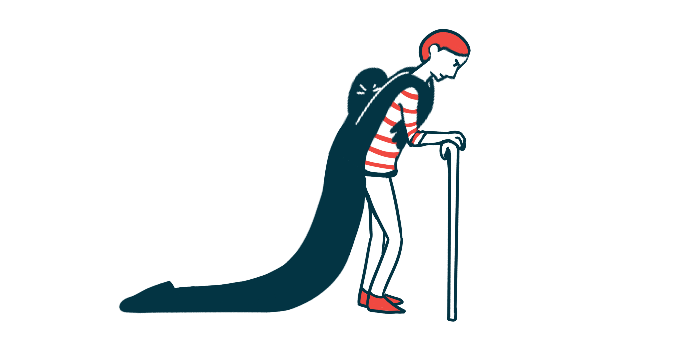Most HAE patients surveyed say they can predict swelling attacks
Study calls for better characterization of early signs to aid timely treatment
Written by |

Most people with hereditary angioedema (HAE) can usually predict an impending swelling attack based on early, or prodromal, signs or symptoms, according to an online survey.
However, results showed differing behaviors and definitions for “early treatment,” with 60% of the participants taking medications as soon as early symptoms started, while 26% took them only if these symptoms persisted. Also, 13% believed early treatment meant taking the medications as soon as swelling started.
“Better characterization of prodromal symptoms may help patients to introduce preventive behavioral or treatment measures to mitigate or avoid swelling and reduce the impact of the disease,” researchers wrote in a letter to the editor, “Prodromal symptoms of hereditary angioedema (HAE) attacks: A patient survey in UK and Spain,” published in Allergy.
HAE is characterized by sudden swelling attacks affecting the deeper layers of the skin. It is mainly caused by mutations in the SERPING1 gene, resulting in deficiency or dysfunction of a protein called C1-inhibitor (C1-INH) that ultimately results in high levels of a blood pressure and inflammation regulator called bradykinin.
Most HAE patients experience early symptoms/signs before swelling attack
According to previous studies, most HAE patients experience early symptoms/signs that precede a swelling attack, called prodromal symptoms. “Unfortunately, research on HAE prodromes is sparse, and their role in diagnosis and treatment remains uncertain,” the researchers wrote.
To investigate awareness about HAE prodromal symptoms, and the actions taken after they occur, the scientists conducted an online survey of 208 HAE patients from the U.K. (128 patients) and Spain (80 patients).
For about 56% of participants, early symptoms or signs warned them of swelling and attacks. Nearly 40% of the participants noted the prodromal symptoms within two hours before the attack, while 27% noted them between two and six hours, and 29% more than six hours before the attack.
The most common early symptoms reported by the patients were tiredness or fatigue (64%), pressure or tightness in the skin (53%), and abdominal pressure (52%). Patients most commonly said they experienced swelling in the abdomen (89%), hands (71%), feet (63%), and face (40%) during the attacks.
After early signs or symptoms, most participants (59%) reported taking some medication. However, the actions taken by patients were significantly different between the countries. While 56% of patients in the U.K. reported self-medicating, 65% of Spanish patients preferred to wait.
“These differences might be related to easier access to on-demand treatment in the UK, making patients more likely to ‘treat early,’ ” the researchers wrote.
Among the patients who took medications after experiencing the first signs or symptoms, nearly a third did so within one hour, and a further third between one and two hours.
65% of patients said they had not always been able to take medication early
Overall, nearly two-thirds of the patients (65%) said they had not always been able to take their medication before the swelling, with 35% of them feeling they could have avoided it by taking their medication early.
Moreover, if patients took their medication while still in the prodromal stage, results showed a reduction in the number of injections needed to treat an attack, although this difference was not statistically significant. This suggests that early treatment may help to reduce medication use, according to the researchers.
“HAE patients continue to face difficulties, highlighting the need for more focused, well-designed studies to determine the proportion of attacks that are preceded by prodromes, their predictive value and the relationship between prodromes and attack,” they concluded.







